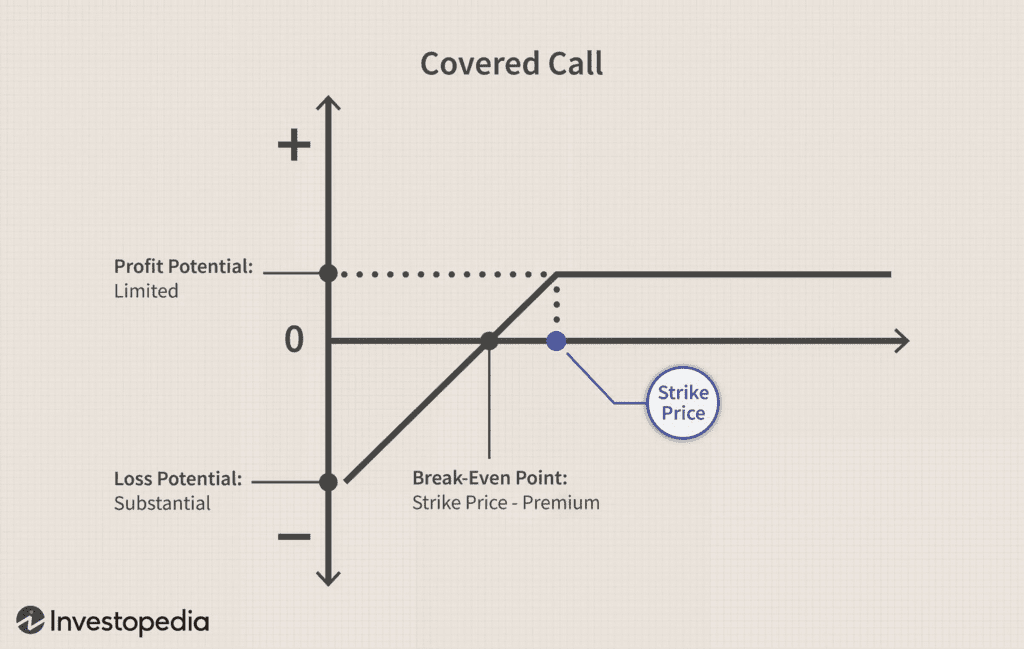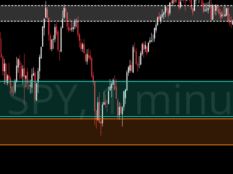Covered CALLS
I’m Meta Matt, Director of Education and welcome to PB University LITE! This is a 50 Class Trading 101 Series geared towards both new and veteran traders alike! We go over everything from Trading Psychology, Technical Analysis, and Options Trading to Commodity Trading, Forex, and more!! This 50 Class series is not designed be taken in order, it is instead designed for traders to browse and pick which classes interest them. I will include the list of classes at the bottom of this page.
Start Trading With Webull: Free Stock Shares
Custom Trading Indicator DISCOUNT: Try StocksBuddy Today
Get A Trading Coach, Premium Alerts, Education, and Community:
1 Month Membership
90 Days (Save 10% Per Month)
1 Year (Save $279)
One way to use options is to write covered calls to try to limit losses. A covered call is a strategy where I own 100 shares of a stock and decide to write (meaning sell, like we discussed last class) a call option on the same stock.
So I’m selling the option to buy a stock at a certain price, by a certain date, for a stock I actually already own. So I receive the premium for selling the call option. If the stock price stays below the strike price of the call option, the option will expire worthless and I will keep the premium as profit.

So in theory, if the stock goes down and I decide to sell my 100 shares of the stock for a loss, the money I made from the CALLs premium expiring worthless will help offset that loss.
So for example let's say you buy 100 shares of $XYZ stock at $30 per share, so that’s $3,000 you spent for the 100 shares. You don’t believe that the stock is going to go up higher than $35 per share within the next month, so you decide to write (sell) a call option with a strike price of $35 and an expiration date of 1 month from now. You receive the premium for selling the call option. Let’s say the premium is $1.00 per share, so you get $100 for writing the Call Option.

So when writing a covered call, it is important to know the difference between at the money ATM, in the money ITM, and out of the money OTM. If the strike price is set at the same as the current stock price, the option is considered to be at-the-money for both CALLS and PUTS. For CALLS, In the money are contracts that are lower than the strike price, and out of the money contracts are higher than the Strike Price.
For PUTS it’s the opposite. So basically In the Money means it wouldn’t expire worthless if the stock price stayed the same as it currently is by the end of expiration, and out of the money means that it would expire worthless if that were to happen. So for contracts that are in the money the premium received for writing the option will typically be higher compared to writing an out-of-the-money option. However the farther In The Money you go, the more likely it will be exercised.
So what happens if your covered call is exercised? Well if the stock price goes above the strike price, so in our example earlier where I bought 100 shares of a stock at $30, and wrote (sold) an options CALL with a strike price of $35 with an expiration a month away. If that month goes by and the stock price goes over $35, let’s say to $40 the option buyer may exercise the option that I wrote, forcing me to sell my 100 shares at the strike price of $35 even though the stock is currently trading at $40.
So instead of selling 100 shares at $40 per share for a profit of $10 per share, or $1,000. I am instead selling my 100 shares at $35 per share, per the options CALL contract, for a profit of $5 per share, so $500, plus I still keep my premium of $100. So that’s a $600 total profit, but I missed out on $400.
Spread trading is another popular strategy used by options traders to make money by taking advantage of the difference in price between two options contracts. Make sure to tune into Class #15 where we talk all about Spread Trading!!

PB University LITE Class List
1) Trading Terminology
2) Stock Market Indices
3) Common, Preferred, and Penny Stocks
4) Diversification of Assets
5) Fundamental Analysis Made Easy
6) Technical Analysis Made Easy
7) Risk Management In The Market
8) Portfolio Management
9) How To Follow Market News
10) Trading Psychology
11) Options Explained
12) The Greeks In Options Trading
13) How To Short Sell Options
14) Covered CALLS
15) Spread Trading
16) Online Brokers for Options Trading
17) Implied Volatility Calculators & Tools
18) Protective PUTS
19) Iron Condors
20) Straddles
21) Reading Level 2
22) Taxes
23) Trading Psychology Techniques
24) The Art Of Trading
25) Becoming A Jedi In The Stock Market
26) Futures Trading Explained
27) Commodity Trading 101
28) Regulatory Environments
29) How To Become A Millionaire
30) $100K In 100 Days
31) Wash Sale Rule
32) Behavioral Finance Part 1
33) Behavioral Finance Part 2
34) 5 Charting Indicators
35) Fair Value Gap
36) Insider Trading and Market Manipulation
37) Stock Chart Types
38) Moving Averages 101
39) Base vs Precious Metals
40) Electricity Trading 101
41) Trading Brokers 101
42) 5 Trading Strategies
43) 85% Trading Rule
44) Are Win Rates A Scam?
45) Futures Trading 101
46) ATR Indicator Strategy With The Greeks
47) MACD Indicator 101
48) Bollinger Bands Indicator 101
49) Wedges, Triangles, Flags and Pennants
50) RSI Divergence 101



